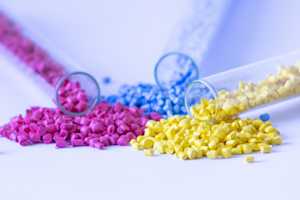Material Testing Insights
Read articles by our experts and guest authors on the practical implications of regulations, scientific advancements, and the ideal uses of different analysis methods.
Top articles

PFAS regulations in the EU: overview of restrictions and compliance testing options
The use of toxic PFAS compounds has been regulated in the EU for over a decade, with restrictions getting stricter each year.

How to compare material testing laboratories – 10 aspects to consider
Read our tips on how to compare material testing laboratories and select the best-suited one for your testing needs.

In vitro biocompatibility tests: alternatives to animal testing in the development of medical devices
In vitro biocompatibility tests can be sufficient to show that low-risk medical devices are safe and compliant with EU regulations.
Metsä Spring teamed up with Measurlabs to ensure the compliance of fiber-based Muoto packaging
Measurlabs' expertise played a key role in ensuring that Metsä Spring's novel packaging solution fulfills European food contact compliance criteria.
Keep reading >

PFAS-free testing for consumer products: how to verify the absence of forever chemicals
As there are thousands of chemicals within the group, substantiating PFAS-free claims requires both targeted analysis and fluorine content testing.
Keep reading >

Trace elemental analysis of thin films and silicon wafers: A method comparison
Tiny contaminant concentrations can compromise the functionality of semiconductor components, making trace elemental analysis crucial for quality control.
Keep reading >

Viscosity testing techniques, standards, and applications
Choosing the most appropriate viscosity testing technique, based primarily on sample properties, is key to obtaining accurate and reproducible results.
Keep reading >

EN 13501-1 standard for fire classification of construction materials: Overview of performance classes & criteria
In most cases, several reaction-to-fire tests are required to determine the correct fire performance class for construction products according to EN 13501-1.
Keep reading >

SEM vs TEM: How to choose the most suitable electron microscopy technique for your application
Scanning electron microscopy and transmission electron microscopy are both powerful techniques for high-resolution imaging, but they have some key differences.
Keep reading >

Overview of ISO 16094 standards for microplastic analysis of water samples
ISO 16094 standards will outline the procedures for microplastic analysis of clean water samples using vibrational spectroscopy and thermoanalytical methods.
Keep reading >

Cosmetic packaging testing by EU regulations and industry guidelines
The safety and compliance of cosmetic packaging are frequently assessed using migration tests adapted from those employed for food contact materials.
Keep reading >

Overview of stable isotope analysis applications in research and industry
Some of the most popular applications include geological, ecological, and archaeological research, as well as verification of food and textile origin.
Keep reading >

Polymer characterization techniques and applications
Polymeric materials' complex structure presents analytical challenges that can be overcome through the use of a combination of characterization techniques.
Keep reading >

Overview of testing requirements under the new Packaging and Packaging Waste Regulation
The new PPWR imposes strict recyclability criteria, bans PFAS in food contact materials, and prohibits certain types of plastic packaging.
Keep reading >

Paper and board recyclability testing by European industry standards
EU sustainability policy requires all paper and board packaging to be designed for recycling by 2030. Recyclability can be validated using standardized tests.
Keep reading >

Testing to substantiate food contact material labeling in the EU
FCMs can be marked with various performance labels, such as dishwasher-safe or microwave-safe, if they can be shown to withstand the relevant conditions.
Keep reading >

Measurlabs accelerated Interlinked's MDR submission process
Read how Measurlabs eased Interlinked's MDR submission process by offering all the necessary tests and proactive expert support.
Keep reading >

The hidden costs of inefficient laboratory testing procurement
Laboratory testing procurement has many pitfalls from wasting time on project management and searching for laboratories to simply overpaying for analyses.
Keep reading >

Solid recovered fuel analysis to ensure consistent fuel quality
Solid recovered fuel (SRF) is more variable than traditional fossil fuels, requiring thorough chemical and physical characterization to ensure high quality.
Keep reading >

Product safety in the EU: Why were consumer products found dangerous in 2023?
Our overview of serious risk alerts registered on the Safety Gate portal in 2023 reveals the reasons why consumer products are most often found dangerous.
Keep reading >

The role of the Biological Evaluation Plan (BEP) in the biocompatibility evaluation of medical devices
Preparing the BEP before large-scale testing starts helps companies choose the most appropriate testing procedure, which in turn helps minimize animal testing.
Keep reading >

Total organic carbon (TOC) testing: applications, regulations, and standards
Popular applications of TOC testing include monitoring drinking water quality and ensuring that water is ultrapure for pharmaceutical use.
Keep reading >

Overview of the U.S. EPA Method 1633 for PFAS testing
Method 1633 details the procedure for screening 40 PFAS compounds from environmental samples, including surface and groundwater, sediment, and wastewater.
Keep reading >















